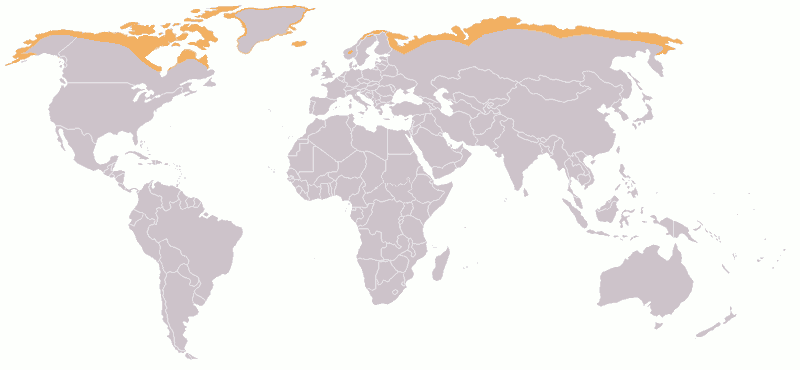Scientists Are Inching Closer to Bringing Back the Woolly Mammoth
Click on images to enlarge
Mammoths are extinct relatives of elephants that lived from 6.2 million years ago to about 4,000 years ago. Compared to modern-day elephants, they had a thicker layer of fur because they lived in colder areas, and their tusks were generally twisted upward. With DNA technology today like that suggested in the movie Jurassic Park, scientists are currently looking into how to revive the mammoth species.
An animal becomes extinct when its last member dies. For religious reasons, most people did not accept that extinction was even possible until the 1700s. (Dinosaurs weren't known until the 1800s. Neither was the theory of evolution proposed until 1859.) Earlier in the 1600s, some evidence of unique animals never before seen was found, but their analyses were inconclusive as to what animals they really were. Sometimes, people thought those creatures were still alive but simply not yet located, and other times, they made mistakes in their identification. Georges Cuvier, a French biologist, laid the foundation for the strong possibility that animals can go extinct when he examined fossils in the late 18th century. In fact, coincidentally, what he examined were the remains of mammoths.
People sometimes confuse mammoths with another extinct elephant ancestor, mastodons. There are some differences we can see in their body structure. The taxonomic tree below shows that mastodons (top) arose much earlier, and that mammoths (bottom) are more closely related to today's Asian elephants. Asian elephants are the closest genetic relative to mammoths, sharing 99.6% of their DNA.
According to the National Park Service (USA), mastodons were shorter and stockier than mammoths, and they ate twigs and fruits, aquatic plants and aquatic invertebrates, whereas mammoths grazed on grass. They shared the habitat known as Beringia, which is eastern Russia and western Alaska. The actual ranges of both animals are shown below with mastodons on the left and mammoths on the right. Clearly, mammoths occupied more northern environments.
In the movie Jurassic Park, a fictional company InGen retrieved dinosaur DNA from the blood of mosquitoes that had bitten them and then got preserved in droplets of amber. The story pointed out the reality of such old DNA being damaged or degraded over such a long period of time. It fixed that problem by InGen scientists using frog DNA to fill the gaps, and then grow the dinosaurs in ostrich eggs. Although not explicitly detailed in the story, amphibians (like frogs) are considered by some scientists to be closer to the common ancestors of all tetrapods, including dinosaurs, than lizards. (A tetrapod is simply a 4-limbed animal, something that developed after fish.)
Some scientists today want to restore mammoths with similar thinking, although not for the same commercial park reasons as Jurassic Park. Colossal Biosciences is one of those companies. Its goals are as follows:
The startup intends to introduce the elephant-mammoth hybrids into the wild to re-create the role once played by the mammoth in the Arctic ecosystem, grazing the land and trampling snow cover, potentially decelerating the melting of permafrost. (March 6, 2024, Wired)
...the scientists also believe introducing herds of elephant-mammoth hybrids to the Arctic tundra may help restore the degraded habitat and combat some of the impacts of the climate crisis. For example, by knocking down trees, the beasts might help to restore the former Arctic grasslands. (September 13, 2021, The Guardian)
So, this is an ecological program, not just a fanciful notion to bring back extinct animals because it sounds cool.
There is an additional point:
More than that, though, Colossal Biosciences also states: Its hope is to bolster biodiversity by bringing back lost species while also helping species on the brink of extinction survive harsh changes like the climate crisis. (March 8, 2024, Business Insider)
What it means by "species on the brink of extinction" is related to the Asian elephants that would serve as the source of DNA to fix any damaged mammoth DNA. Currently, there are only 30,000 to 50,000 Asian elephants in the wild, and if Colossal Biosciences' technology works, it may not only bring back mammoths to help the environment but also potentially improve survival of today's Asian elephants.
So, how is the technology proposed to work? Find a mammoth that has been frozen. Remove DNA from the best-preserved cells. Identify the genes that are undamaged. Compare them with DNA from modern elephants in order to identify which genes are specific to mammoths, then cut them out. Insert those mammoth genes into DNA from a modern elephant to create a hybrid. Put the DNA into the nucleus of an egg cell from an elephant, and allow it to mature inside a surrogate elephant. Colossal Biosciences is interested in only 65 genes, the ones related to tolerance to cold temperatures, so they don't have to locate all mammoth genes.
- embryonic cells in the umbilical cord
- circulating blood cells
- liver
- pancreas
- intestinal wall
- skin
- bone marrow
Some people think by introducing mammoths, the trees and shrubs can be eliminated as they are crushed by these beasts, and the ground may even be compacted under their weight. These things might serve to improve tundra conditions and combat effects of climate change.
Even if all of this fails, there is still a valuable offshoot from the science. Better techniques can be found to learn about stem cells in other animals and humans, for example. And, it appears that elephants are more resistant to cancer, so the research might help learn about those genetic factors and how that might help humans.
The last of the mammoths (Natural History Museum, YouTube)







No comments:
Post a Comment